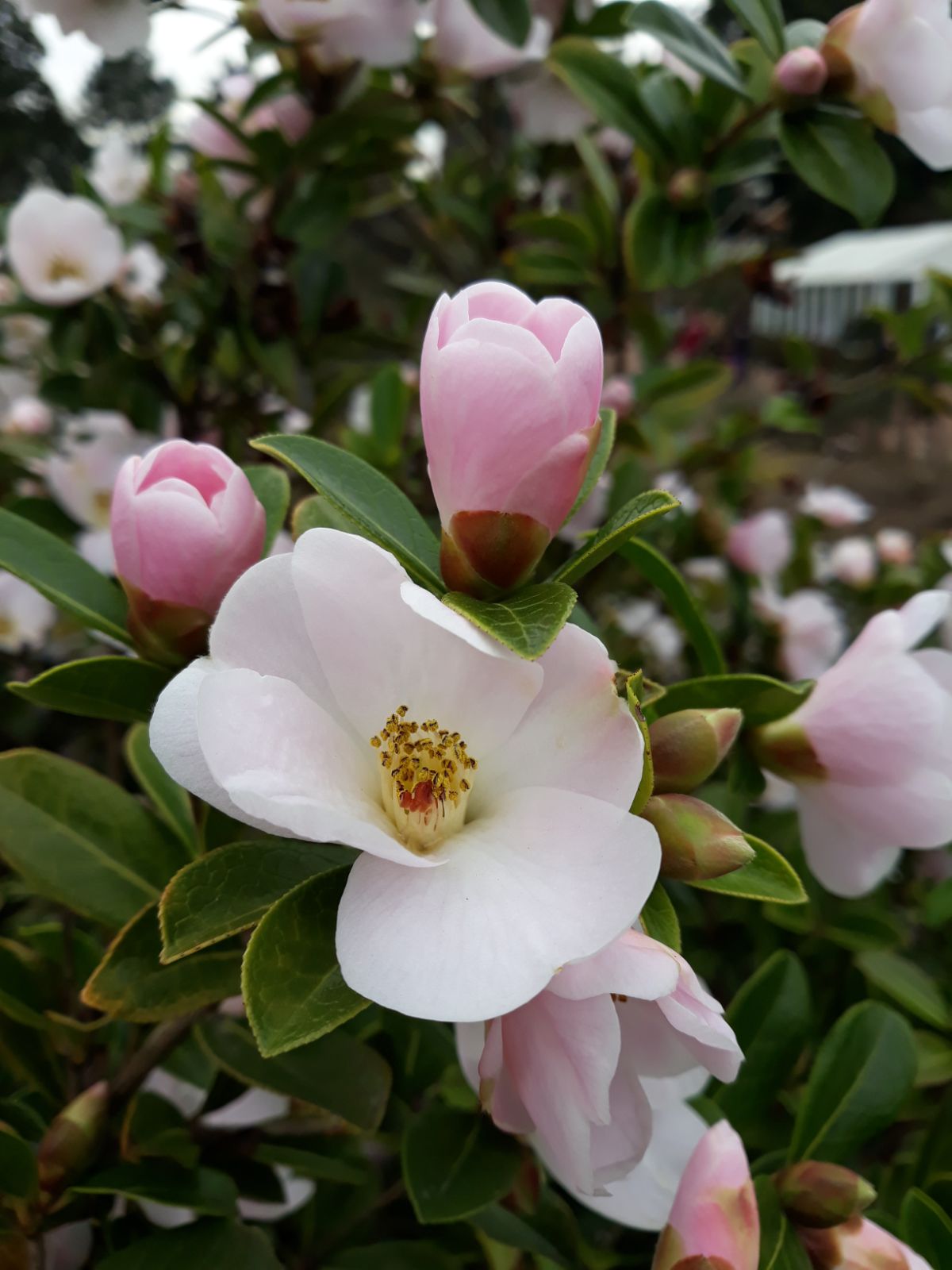Camellia saluenensis
Credits
Article from Bean's Trees and Shrubs Hardy in the British Isles
Recommended citation
'Camellia saluenensis' from the website Trees and Shrubs Online (treesandshrubsonline.
Genus
Other taxa in genus
- Camellia brevistyla
- Camellia caudata
- Camellia chekiangoleosa
- Camellia chrysantha
- Camellia costei
- Camellia crapnelliana
- Camellia cuspidata
- Camellia drupifera
- Camellia edithae
- Camellia forrestii
- Camellia furfuracea
- Camellia granthamiana
- Camellia japonica
- Camellia kissii
- Camellia lutchuensis
- Camellia maliflora
- Camellia oleifera
- Camellia ptilophylla
- Camellia reticulata
- Camellia sasanqua
- Camellia sinensis
- Camellia taliensis
- Camellia tsaii
- Camellia × vernalis
- Camellia × williamsii
- Camellia yunnanensis
An evergreen shrub 10 to 15 ft high, of very bushy, luxuriantly leafy habit; young shoots at first hairy. Leaves elliptic to elliptic-lanceolate, pointed, tapered at the base, very finely and regularly toothed, each tooth tipped with a black gland; 11⁄2 to 21⁄2 in. long, half as much wide; dark green above, paler beneath, glossy on both sides, glabrous except for hairs on the midrib beneath; stalk 1⁄6 in. long, hairy. Flowers produced in early spring, singly or in pairs, from buds at the end of the previous summer’s shoots; they are of a pale blush-pink with darker lines, the five petals 1 to 11⁄2 in. long, broadly wedge-shaped, notched. Fruit woody, 1 in. wide, carrying about three seeds, which have a flat side and are about 1⁄2 in. wide.
Native of mid-west Yunnan, China, on the mountains between the Salween and Shweli rivers. It seems first to have been found by Forrest in 1917, and to have been introduced by him then or later. Apparently we owe its existence in cultivation to the late J. C. Williams, who grew several plants against a north wall at Caerhays. The plant was at first identified as Thea (Camellia) speciosa, Pitard, but the shrub to which that name was originally given proves to be a Gordonia; hence Dr Stapf’s name that heads this note. The flowers evidently vary in colour in a wild state, as specimens collected by Forrest, with blossom described by him as ‘white’ and ‘crimson’, are included by Dr Stapf under this species. This camellia is generally hardy except in cold or exposed situations but may need protection at first. Its hybrids with C. japonica are hardier, see C. × williamsii. The plant figured in the botanical Magazine, t. 9505, as C. saluenensis forma macrophylla is now known to be one of these hybrids.

